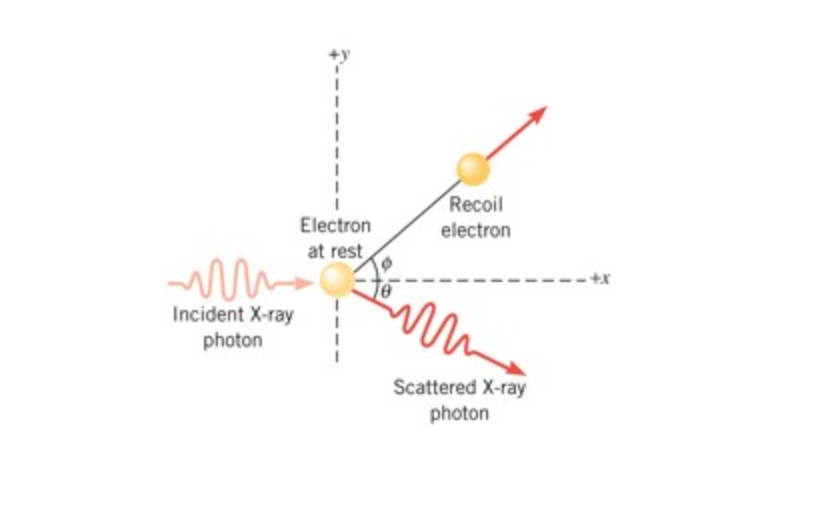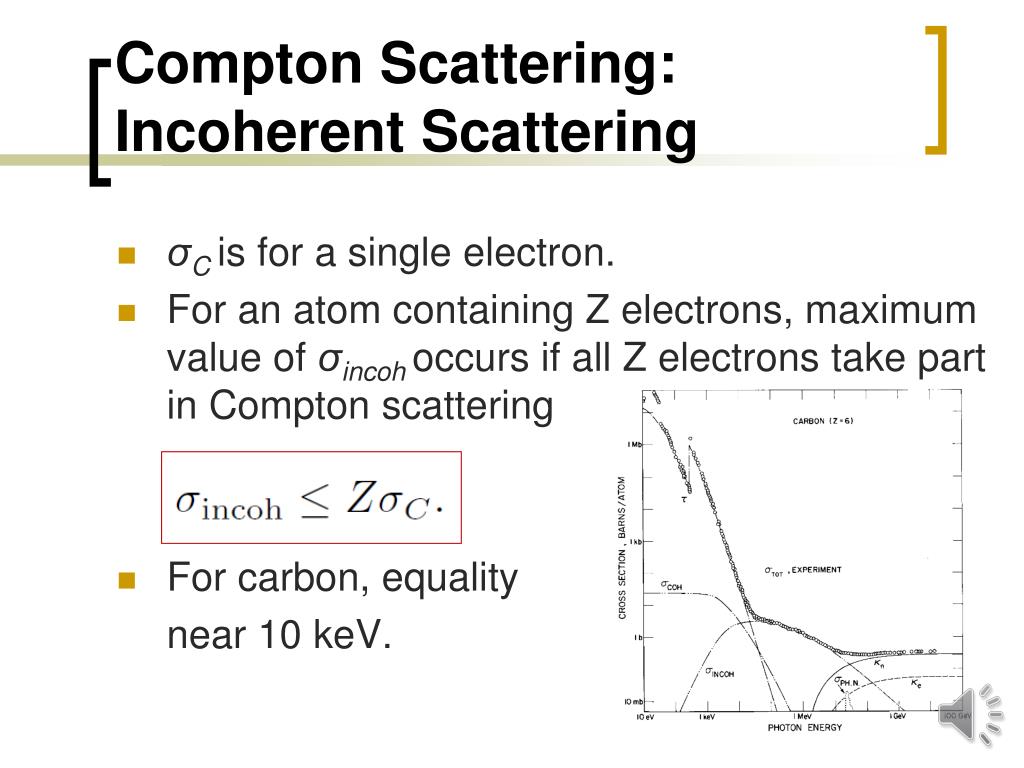
In Compton scattering by bound electrons, an electron is ejected as a result of the photon kick, and the remaining ion recoils to satisfy momentum conservation 1, 7. In standard Compton scattering, momentum exchange between the incoming photon and the free-electron governs the whole process. The emerging high repetition rate at several XFEL facilities will further facilitate the investigation of such elusive processes by using multi-particle coincidence spectroscopy.Ĭompton scattering of photons by electrons bound to atoms differs from standard Compton scattering, i.e., from scattering by quasi-free electrons, in that it is a three-body problem instead of a two-body one. Because of this, XFELs have already opened the way to the observation of non-linear (multi-photon) processes in the X-ray wavelength spectral region 5, 19, 20, 21, 22, 23, 24, to image single-molecule structural changes by means of photoelectron diffraction 25 and X-ray diffraction 26, or to pump and probe electron dynamics occurring in valence and inner-valence molecular states with few-femtosecond resolution 27, 28, 29, 30, 31, 32, 33. Indeed, ultrashort pulses currently generated by XFELs 15, 18 are at least ten orders of magnitude more intense than those generated in synchrotron radiation facilities, so that they can efficiently compensate for the smallness of the cross-sections by providing a much larger number of photons in a short time interval.

This is practically an unsurmountable barrier for molecules, as one must also account for the additional nuclear degrees of freedom.ĭue to their high brilliance and short duration, X-ray free-electron laser (XFEL) pulses 10, 11, 12, 13, 14, 15, 16, 17 should be the ideal tool to investigate Compton scattering from molecules in the few-hundred eV to keV photon energy range.

These are very challenging experiments, since, in addition to the inherent complication of detecting the various charged fragments in coincidence with good enough statistics 2, Compton scattering cross-sections are extremely small: around six orders of magnitude smaller than photoionization cross-sections associated with the absorption of that same photon 1, 3, 4, 5, 6, 7, 8, 9. Compton earned the Nobel Prize in Physics in 1927 for this new understanding about the particle-nature of photons.Kinematically complete experiments at synchrotron radiation facilities have recently made it possible to observe Compton scattering of energetic photons from a helium target with unprecedented detail 1, thus providing an additional tool, so far unexplored, to investigate electron dynamics in atoms and molecules. H.Compton in 1923 at Washington University in St. The Compton scattering was observed by A. The energy transferred to the recoil electron can vary from zero to a large fraction of the incident gamma ray energy, because all angles of scattering are possible. The photon transfers a portion of its energy to the recoil electron.

This deflection results in a decrease in energy (decrease in photon’s frequency) of the photon and is called the Compton effect. In Compton scattering, the incident gamma ray photon is deflected through an angle Θ with respect to its original direction. This deflection results in a decrease in energy (decrease in photon’s frequency) of the photon and is called the Compton effect.Ĭompton scattering is the inelastic or nonclassical scattering of a photon (which may be an X-ray or gamma ray photon) by a charged particle, usually an electron. Definition of Compton Scattering In Compton scattering, the incident gamma-ray photon is deflected through an angle Θ with respect to its original direction.


 0 kommentar(er)
0 kommentar(er)
